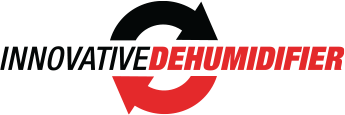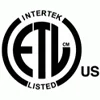UPDATED: October 26, 2021
Why multifamily properties are adding tankless dehumidification.
WHO are wall mounted dehumidifiers created for?
Specifically designed for multifamily housing apartments but extremely beneficial in student housing, historic buildings, residential subdivisions, affordable housing, resorts, housing authorities, luxury condos, and more!
“When mold is found indoors, a plan to eliminate it and prevent it from returning must be established as quickly as possible,”1 according to Richard F. Progovitz, author of Black Mold: Your Health and Your Home. If you are a property manager, developer, general contractor, architect, or mechanical engineer…you get it. Removing moisture to lower high humidity is a necessity! Thankfully, Innovative Dehumidifier Systems (IDS) has been working within the multifamily industry for nearly a decade as the pioneers of wall dehumidifiers to help prevent moisture problems inside.

WHAT is an in wall/on wall dehumidifier?
A wall mounted dehumidifier mounts inside the wall or hangs on the wall to help reduce the risks associated with high humidity and excess moisture in residential spaces. It aids in both indoor air quality and structural damage prevention.
HOW does dehumidifying or removing excess moisture help prevent property damage?
There are several key components (or ingredients) required for mold spores to become active, grow, and thrive. Just like baking a cake, if we can eliminate or reduce one of the ingredients, we are able to limit the conditions in which it is able to grow and thrive. As stated by Kathleen Parrott, Ph.D., Professor of Housing at Virginia Tech, “to prevent mold problems in our homes, we need to understand how mold grows and to learn to control the conditions that lead to mold growth.”2
“In order to grow, molds require:
− A food source.
− Appropriate temperature.
− Oxygen.
− Adequate moisture.”2
Combining these components can be damaging. Parrot states that “the problem is when there is an excess of mold growth in our buildings and the mold growth damages building materials or threatens our health”.2 Referencing John Manuel’s article A Healthy Home Environment “experts say the best strategy for avoiding the buildup of mold and mildew is to reduce moisture levels in the home.”3 According to Moisture Control Strategies for the Building Envelope, “CONTROL IS NECESSARY to avoid moisture-related problems in building envelopes and human health. Moisture damage is one of the most important factors affecting the service life of a building”.4
WHY is excess moisture a problem in multifamily housing apartments?
“Mold spores are everywhere.” – Richard F. Progovitz, Black Mold: Your Health and Your Home1
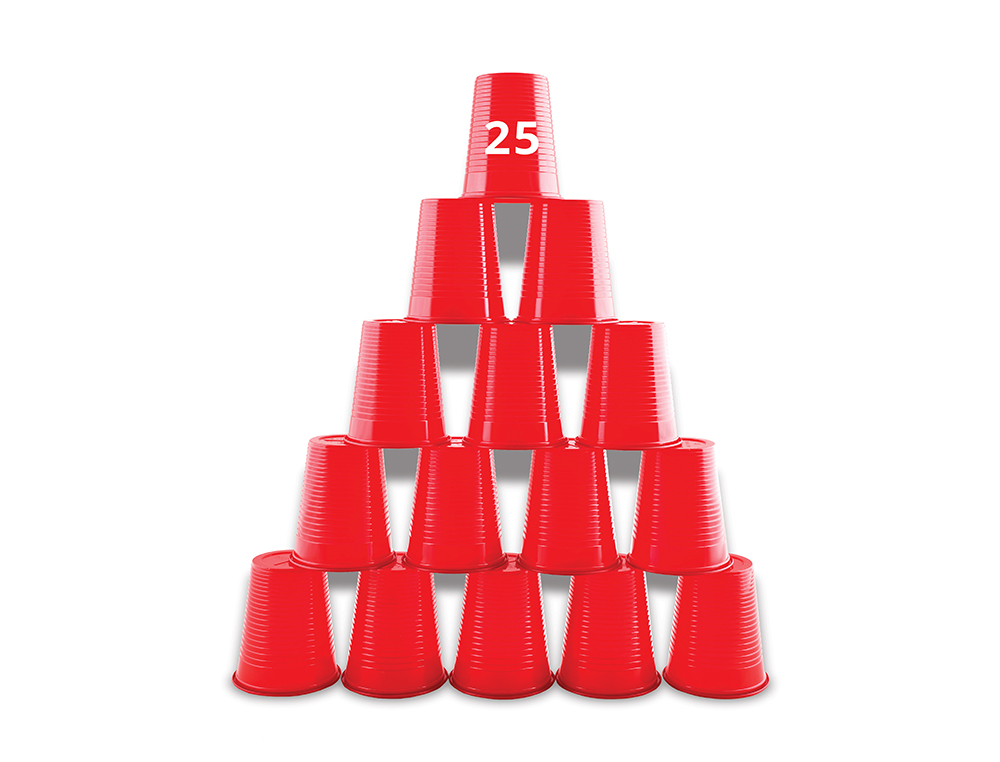
Mold grows everywhere because microbial spores are everywhere. S.S. Block’s article Humidity Requirements for Mold Growth states that “in a discussion of the mildew problem, mold requires for growth and proliferation certain essential physical and chemical conditions. These include satisfactory temperature, adequate moisture, sufficient oxygen, proper pH, and essential nutrients.”5 Kathleen Parrott, Ph.D., goes into further detail in her article about mold prevention explaining that “molds digest organic matter as a food source. This includes many materials found in our homes, including wood, paper, textiles, plants, and food. Therefore, there is always a food source for molds in our homes, including many of the materials that we use to build and furnish our homes.”3 Unfortunately, we cannot control most of these factors especially in smaller, tighter envelopes such as apartments, but we can help control the relative humidity. According to Block “the control of moisture through regulation of humidity has proved to be most satisfactory.”5
A few specific factors that multifamily housing apartments experience is below:
1. Daily Moisture – 25 pints
The ASHRAE Handbook of Fundamentals states“ a typical family of four may produce as much as 11.4 L/day (25lb/day) of water vapor or more if humidifiers, automatic washers, and clothes dryers are used”.7 In other words, on average, a family of 4 produces 11.4 L/day, almost 25 pints of water per day. Moisture is released into the air from daily activities such as cooking, cleaning, laundry, showering, perspiring, etc. The World Health Organization (WHO) states that “the capacity of building and interior materials to absorb and release moisture has a significant effect on indoor humidity fluctuations and may have consequences for moisture damage and dampness”.8
2. Daily Habits/Tenant Behavior
Daily habits differ from person to person. For example, some choose not to run exhaust fans while cooking or showering. Others may not leave their residence often, while others cook all day. Some people choose to house many plants and/or aquariums. According to Stephen Smulski’s article on the Durability of Energy-Efficient Wood-Frame Houses, “water vapor generated by occupants’ activities and released from other interior sources lingers longer indoors. When warm, moist air entering into these spaces is cooled below the dew point, the excess moisture is deposited as condensation on framing, sheathing and other cold surfaces, creating conditions favorable to mildew, mold, and decay fungi”9
3. New Construction Efficiencies – Tighter Envelopes
In recent years, there has been an increase in mold growth indoors due to tighter construction regulations. According to John Manuel’s article A Healthy Home Environment “since the energy crisis of the 1970s, builders have concentrated on building tighter homes as a way of minimizing heating and air-conditioning costs. Tighter houses can be healthy houses, but more care must be taken to avoid generating or trapping pollutants indoors”.10 High-efficiency HVAC systems are much more efficient and run for shorter periods of time. This is exceptional for HVAC systems, however as a result, moisture does not have an escape route and cannot be cycled out. In reference to Aaron McGill Cooper’s thesis, Mold Susceptibility of Rapidly Renewable Materials used in Wall Construction, “although tighter building construction practices save energy, they can also create an environment of stagnant air that is highly hospitable to mold.”11 Cooper goes into further detail about moisture trapped indoors explaining that “undesirable moisture is then introduced by unavoidable activities such as showering, cooking, cleaning, and sweating, along with unplanned events such as spills, overflowing toilets, or plumbing malfunctions”.11 Kathleen Parrot, Ph.D., Professor of Housing, states that “to control mold growth in our homes, we must control excess moisture and water!”12
4. Introduction of Fresh Air Vents
Many codes require the introduction of “fresh” air from outside. According to the World Health Organization, “ventilation also affects air and moisture flow through the building envelope and may therefore lead to moisture problems that degrade the structure.13 Introducing outside air with high humidity into your property will increase the relative humidity and allow the opportunity for pollutants to come indoors. Biological pollutants are found to some degree in every home, school, and workplace. Referencing John Manuel’s article, A Healthy Home Environment, “biological pollutants are found to some degree in every home, school and workplace. They come from outdoor air in the form of pollen and other allergens, from human occupants who expel viruses and bacteria, from pets that shed dander, from insect pests, and from moist surfaces that allow mold and fungi to grow.”10
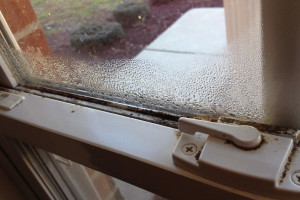
WHERE does the IW25 Dehumidifier get installed, and how does it work?
The tamper-proof and tankless dehumidifier is designed for install in a variety of applications, out of the way and off of the floor (no need to purchase a mounting kit). The IW25 runs independent of HVAC system. It plugs directly into a 120v outlet or can be hardwired into existing electrical, all while draining into a hub-drain or plumbing line; an optional integrated condensate pump is available for installations with limited draining access. We recommend installing the unit in an open, central location.
The IW25 IN Wall Dehumidifier can be installed directly through 2 x 6 walls spaced 16″ on center or recessed through 2 x 4 walls. To partially recess the IN Wall Dehumidifier, an optional Exterior Sleeve accessory can be purchased, for a semi-recessed option.
The IW25 On Wall Dehumidifier mounts directly on wall, without any additional accessories. The on wall dehumidifier can hang on a variety of surfaces including drywall, CMU block, masonry, concrete, stucco, etc.
WATCH THE VIDEO to see why you need a wall mounted dehumidifier.
Creating a humidity escape plan is important for all multifamily properties to consider to protect your long-term investment. Supplemental dehumidification systems can reduce unnecessary remediation costs and litigation concerns. Here are a few of the benefits you will experience with the IW25 dehumidifier:
| Hands-free & Tankless | Energy efficient |
| Tamper proof | Runs quietly |
| Easy operation | Simple installation |
| Minimal maintenance | Independent of HVAC |
| Hard wire capable | Drains direct into existing plumbing |
| Installs between 16″ wall studs | Includes a bi-polar ionizer |
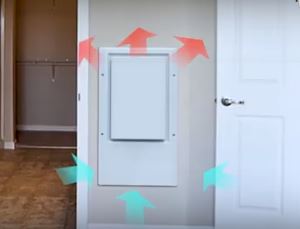
WHEN do you need a wall mounted dehumidifier?
NOW. There is no time like the present, especially when it comes to aiding in mold prevention. We suggest adding the IW25 dehumidifier into your floor plans whether it is a new construction or rehabilitation project. Our free consultations and assistance is readily available to you as needed, and we are eager to problem-solve in existing apartments as well.
WHAT is the COST?
The cost of putting dehumidifying systems in your entire apartment complex can potentially be cheaper than 25% of mold remediation in 1 unit, not to mention additional litigation fees. Interested in purchasing a dehumidification unit? Order the IW25 in-wall dehumidifier today!
Call us today for factory direct pricing on your entire property!
910-579-3348
*Layout and moisture conditions vary in every apartment and home; in typical conditions, the IW-25 can maintain the RH of 59% or less but is not guaranteed. Moisture removal will vary in relation to unit’s power, temperature, and relative humidity. Amp draw varies at different climate conditions.
**dBA is tested in a controlled environment; levels may vary due to install and install location.
***does not apply to subterranean spaces.
Sources:
1. Progovitz, R. F. (2003). Black Mold: Your Health and Your Home. The Forager Press, LLC https://vtechworks.lib.vt.edu/bitstream/handle/10919/50219/2901-7020.pdf?sequence=1>
3. Focus; John Manuel, July 1999, Environmental Health Perspectives, accessed October 2021, <https://ehp.niehs.nih.gov/doi/pdf/10.1289/ehp.99107a352>
4. Moisture Control Strategies for the Building Envelope; Anton TenWolde and William B. Rose January 1996, Sage Journals, accessed October 2021, <https://journals.sagepub.com/doi/abs/10.1177/109719639601900302?journalCode=jenb>
5. Department of Chemical Engineering, University of Florida, S.S. Block, June,1953, ASM Journals, accessed October 14,2021 < https://journals.asm.org/doi/pdf/10.1128/am.1.6.287-293.1953>
6. Virginia Polytechnic Institute and State University; Robert Grisso, Martha Walker, Phillip Agee, and John Ignosh, Virginia Cooperative Extension, accessed October 11, 2021 https://resources.ext.vt.edu/contentdetail?contentid=2227&contentname=Energy%20Series:%20What%20about%20Mold%3F
7. ASHRAE Handbook of Fundamentals, ASHRAE, Atlanta, GA, 1991.
8. World Health Organization, Ollie Seppänen, Jane Kurnitski 2009, National Center for Biotechnology Information, accessed October 12, 2021 < https://www.ncbi.nlm.nih.gov/books/NBK143947/>
9. Smulski, S. (1999). Durability of Energy-Efficient Wood-Frame Houses. Forest Prod. J.
10. Focus: John Manuel, July 1999, A Healthy Home Environment, accessed October 18, 2021. https://ehp.niehs.nih.gov/doi/pdf/10.1289/ehp.99107a352
11. Cooper, Aaron M. Mold Susceptibility of Rapidly Renewable Materials used in Wall Construction. 2007. Texas A&M University, Master of Science. Core, https://core.ac.uk/download/pdf/4276521.pdf
12. Virginia Polytechnic Institute and State University; Kathleen Parrott, Ph.D. 2009, Virginia Cooperative Extension, accessed October 11, 2021
<https://vtechworks.lib.vt.edu/bitstream/handle/10919/50219/2901-7020.pdf?sequence=1>
13. World Health Organization, Ollie Seppänen, Jane Kurnitski 2009, National Center for Biotechnology Information, accessed October 18, 2021. < https://www.ncbi.nlm.nih.gov/books/NBK143947/>
